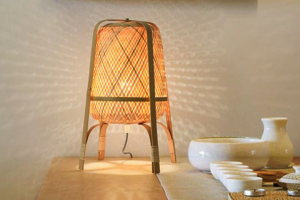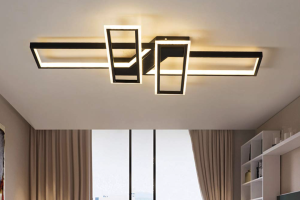Introduction
Our bodies are designed to function in alignment with the natural cycle of day and night. Our biological clock, also known as the circadian rhythm, is responsible for regulating many of our physiological processes, such as sleep-wake cycles, hormone production, and metabolism. However, with the advent of modern technology, we are increasingly disrupting our natural rhythms by exposing ourselves to artificial light sources throughout the day and night.
Circadian lighting is an emerging field of research that seeks to understand how lighting can be used to support and enhance our biological rhythms. This article will explore the science behind circadian lighting, as well as the practical applications for optimizing lighting in our daily lives.
The Science Behind Circadian Lighting
Light is the most powerful cue for regulating our circadian rhythms. Our bodies are highly sensitive to the color, intensity, and timing of light exposure. In particular, blue light, which is most prevalent in natural sunlight, is the most effective at regulating our biological clock. Exposure to blue light in the morning helps to reset our circadian rhythm, while exposure to red light in the evening helps to prepare our bodies for sleep.
However, the advent of artificial light sources has disrupted our natural exposure to these cues. Most artificial light sources emit a skewed spectrum of light that does not accurately mimic the natural cycle of daylight. In particular, many LED lights emit high levels of blue light, which can disrupt our sleep patterns and hinder our ability to regulate our biological rhythms.
The Importance of Timing
Timing is also a critical factor in circadian lighting. Our circadian rhythm is synchronized with the natural cycle of day and night, so exposure to bright light during the day and dim light at night helps to maintain our biological clock. However, exposure to bright light at night, especially from electronic devices, can suppress the production of melatonin, a hormone that is crucial for regulating our sleep-wake cycles.
The Benefits of Circadian Lighting
Circadian lighting has many practical applications for improving our health and well-being. Here are a few examples:
– In classrooms and offices, circadian lighting can improve focus and productivity by aligning lighting with the natural cycle of day and night.
– In hospitals and care homes, circadian lighting can help to regulate patients’ sleep-wake cycles, reduce the risk of delirium, and improve mood.
– In homes, circadian lighting can help to improve sleep quality, reduce the risk of insomnia, and support mental health.
Practical Applications of Circadian Lighting
There are many ways to implement circadian lighting in our daily lives. Here are a few practical tips:
– Use light bulbs that mimic natural daylight, such as ‘daylight’ or ‘cool white’ bulbs.
– Install dimmer switches or use lamps with dimmer options to create a relaxing and sleep-friendly environment in the evening.
– Use blackout curtains or blinds to limit exposure to natural light at night.
– Avoid exposure to bright screens, such as TVs and smartphones, for at least an hour before bedtime.
– Consider investing in circadian lighting systems that can be programmed to adjust the intensity and color of light throughout the day.
Conclusion
Circadian lighting is paving the way for a more holistic approach to lighting, one that recognizes the importance of aligning our environment with our natural biological rhythms. By understanding the science behind circadian lighting and implementing practical applications in our daily lives, we can improve our sleep quality, enhance our productivity and focus, and support our overall health and well-being.




More Stories
The Elegance of Spiral Staircase Chandeliers: A Perfect Blend of Form and Function
The Elegance of Sconce Hallways: Illuminating Your Passages with Style
Illuminate Your Space with Adjustable Wall Lights in the UK